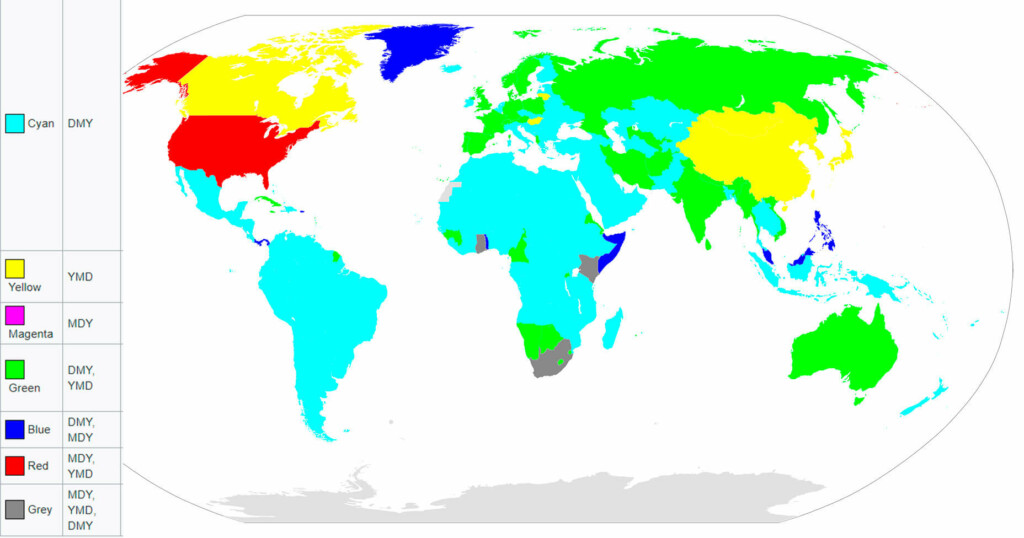What you need to know about website localization
The importance of website localization lies in its ability to communicate with a brand’s targeted customers most effectively. In contrast to translation, localization aims to adapt your website to local language and culture.
Even though customer behavior around the world is currently following the same trends, your marketing strategies should vary depending on the cultural context. That is why we now feel a strong need to provide localized websites that actually get consumers to lean in.
Best practices for the website localization success
A website that is tailor-made for a particular audience can successfully reach its goal by attracting more customers and getting a higher conversion rate. In this article, we have collected website localization tips that might help you grow your business locally.
Domain
When localizing a website, it is essential to first choose between:
- Creating a subdomain: es.domain.com
- Using your main domain with different folders (subfolders): domain.com/es
Each option has its own pros and cons and it is up to you which one suits you more depending on your goals.
Subfolders are advisable if you plan to have less of a local presence and you are not going to translate your website into many languages. As for subdomains, they work most effectively if you aim to have a strong country-specific presence.
Machine translation vs human translation
One of the first questions you’re likely to face is whether to go with machine or human translation.
Machine translation allows you to upload the website content into a program and process it automatically. It is a great option when translating typical patterns and when no adaptation is needed.
Here are some of the platforms that can help you:
Yet, in some cases, website localization best practices require human translation (ideally, by a native speaker with a knowledge of local culture and market).
Here are a few platforms to resort to:
Image titles
In contrast to content that is visible to the general audience, metadata is sometimes left unseen by the customers, but never by the search engines. These elements aim to enhance search visibility and customer experience as well as boost referral traffic from other sites and social media.
If you leave image titles untranslated, this will result in poorer ranking in the SERP which can damage your organic traffic.
Regional patterns
Different countries or even regions use different patterns in their everyday life. To ensure a smooth learning experience for your customers, it’s vital to adjust website content to the local context.
The examples below might help you get an understanding of differences in regional patterns that are essential user-interface elements.
- Number format
| Germany | Italy | Great Britain\USA |
| 4 294 967.295,000 | 4.294.967.295,000 | 4,294,967,295.00 |
- Date

- Temperature
| The United States, the Bahamas | European countries |
| 46.4 °F | 8 °C |
- Address formatting
| Italy | Germany | Australia | USA |
| Claudio Verdivia Roma 3581055 Santa Maria Capua Vetere CE | Firma ABCKundendienstHauptstr. 501234 Musterstadt | Ms H WilliamsFinance and AccountingAustralia Post219–241 Cleveland StSTRAWBERRY HILLS NSW 1427 | Jeremy Martinson, Jr.455 Larkspur Dr. Apt 23Baviera, CA 92908 |
- Telephone numbers
| USA, Canada | Japan | Spain | Switzerland |
| NPA-NXX-XXXX, where NPA is the three digit area code and NXX-XXXX is the seven digit subscriber number (541) 754-3010 | (0AA) NXX-XXXX, where 0AA is the area code and NXX-XXXX is the subscriber number (012)-345-6789 | nine digits long, starting with ‘9’ or ‘8’ for fixed lines +34910606150 | 0AA BBB BB BB where 0AA is the national destination code and BBB BB BB is the subscriber number (044)5557788 |
Colors
The power of visual perception can not be underestimated especially in relation to website localization. When targeting a specific culture or nation, color as a way of emotional and meaningful appeal might come in handy. Yet, you need to be careful as colors are perceived differently around the globe.
For example, in most parts of North America yellow is associated with happiness whereas in Latin America it is seen as a sign of death and sorrow. Another example is red — in Asian countries it represents happiness and joy, while in Middle Eastern countries it symbolizes danger and evil.
Target dialect
Localized content can make a huge difference to your website`s review rate. Your site`s impressions might grow by up to 75% if you pay attention to the specifics of the dialect used by your target audience. A good illustration to that is different varieties of English (British E., American E., Australian E., etc) that should be considered when creating the best localized websites.
Ample whitespace
Languages have different average word lengths (just compare English and German sentences to see the difference) and some languages have different word orientations (right-to-left or vertical reading direction).
Thus, it is reasonable to make your website design flexible and leave some extra space (15-20% might be enough) within different buttons. This will save you a lot of time that will otherwise be required for re-working. Also, as internet speed can vary in different regions, this can protect your website against low speed.
Regional SEO
Regional SEO can help you expand your organic traffic, encourage more customers and enhance conversions.
Leverage a keyword search that focuses on the words and phrases searched by local consumers of your product and not simply translate the keywords that you are using now. The best option, in this case, is to contact a local SEO specialist who will examine the market and come up with a list of useful keywords.
Local link building
Link building is an essential part of SEO. You need to build locally relevant links to set up a business at the top of geo-targeted keywords that have a higher chance of converting.
Local link building is how you can get other websites in your local area to link to yours. You can start by mentioning local events in your niche and businesses taking part there or network with local influencers and industry experts.
Multichannel localization
It is beneficial for your business to distribute your message across various channels to reach a wider audience. So, once the website is localized, take care of your social media groups, email newsletter, and so on.
In addition, you may also use other materials such as video, PDFs and different manuals or brochures to ensure your website monetization.
Regulations
Each country has different laws on the terms of data protection, service, personal data, etc. So, it is advisable to refer to a local legal specialist who will help make your business comply with the regulations. That might be cheaper than paying off the legal fee for law violations.
Localized customer support
By giving support in the local language, you’ll make your business far more attractive and credible to the local customers who might have concerns otherwise. In this case, you may either take on native speaking personnel or prepare templates in a local language.
Suitable payment gateway
The absence of a suitable payment gateway is one of the reasons why customers might leave your website before making a purchase. To not reduce all marketing efforts to zero and make money from your website, make sure to study how local businesses process payments and what gateways customers prefer. It might also make sense to display the prices in local currencies.
Create authentic content
Instead of simply translating your content, why not write new, authentic materials? Growing your business locally means following the regional trends and particularities and not simply adapting the existing set of tools.
For instance, take advantage of the local holidays to drive traffic. It doesn’t make sense to display it on all your websites, but it will be beneficial for the region that celebrates.
Brand transliteration
Language differences can result in your brand name being hard to pronounce or remember for local customers. More than that, law regulations sometimes require you to write the brand name in the local language, especially for the markets that do not use Latin-based alphabets.
For these reasons, consider transliterating your company name or even localizing it. Ideally, it should resemble the original one in terms of pronunciation to make your brand recognizable.
Best tactics to localize your website
Companies that aim to understand their customer vision and way of thinking are able to reach great gains. And localization is one of the strategies to cater to your local consumers, provide them with a smooth experience and establish authority in the market.
The best localized websites consider regional context and deliver their content accordingly, providing support in the local language and accepting the local currency, to top it all off. By allocating your budget to website localization, you’ll gain the trust of local consumers and expand your reach globally.




